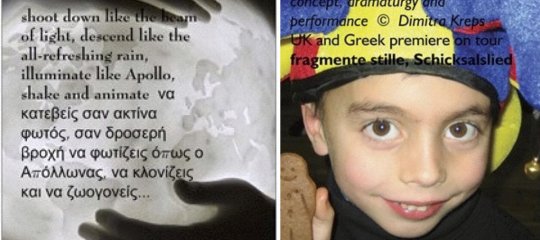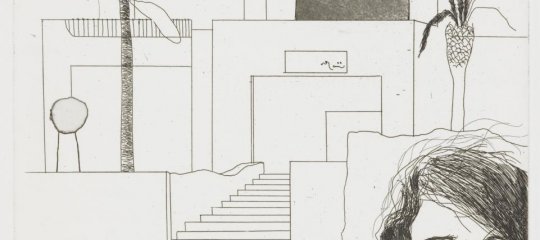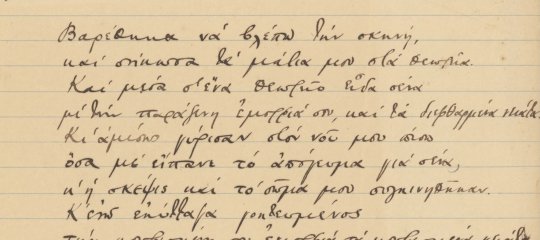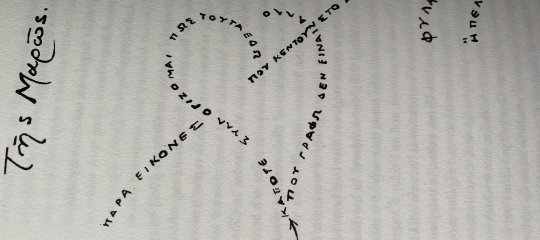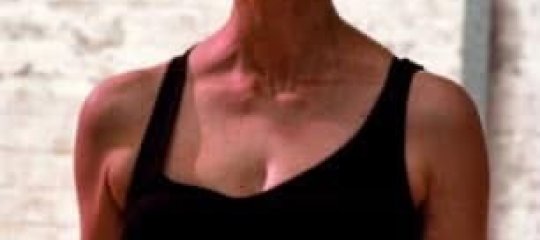Μαθήματα νέων ελληνικών από το "Διδασκαλείο Νέας Ελληνικής"
Διδασκαλείο Νέας Ελληνικής Γλώσσας - ΑθήναΤο Πανεπιστήμιο Αθηνών παραδίδει μαθήματα νέων ελληνικών σε τρεις χρονικές περιόδους.
Για την χειμερινή περίοδο, λειτουργούν δύο τμήματα:
Α' Τμήμα
Ξεκινά στις 4 Οκτωβρίου 2004 και ολοκληρώνεται στις 27 Μαΐου 2005. Οι ώρες διδασκαλίας είναι 15 την εβδομάδα και η περίοδος εγγραφών διαρκεί από τις 13-29/9/2004. Τα δίδακτρα ανέρχονται στο ποσό των 580 ευρώ ενώ την δυνατότητα παρακολούθησης χειμερινών μαθημάτων με μειωμένα δίδακτρα (450 ευρώ) έχουν οι σπουδαστές των παρακάτω κατηγοριών:
- όσοι είναι ελληνικής καταγωγής
- όσοι είναι σύζυγοι Ελλήνων πολιτών
- όσοι είναι υπότροφοι της ελληνικής κυβέρνησης
- Παλαιστίνιοι φοιτητές
- όσοι προέρχονται από τις εξής χώρες: Αλβανία, Αυστρία, Βουλγαρία, Γερμανία, Δανία, Ιορδανία, Ιράκ, Ιράν, Ιρλανδία, Λίβανος, Μαρόκο, Νορβηγία, Ουρουγουάη, Ρουμανία, Σευχέλλες, Σουδάν, Σουηδία, Συρία, Φινλανδία
Β Τμήμα
Ξεκινά στις 10 Ιανουαρίου και ολοκληρώνεται στις 27 Μαΐου 2005. Οι εγγραφές γίνονται κατά το διάστημα 6-17/12/2004 και οι ώρες διδασκαλίας είναι 15 την εβδομάδα όπως και το Α' Τμήμα. Τα δίδακτρα ανέρχονται στο ποσό των 516 ευρώ.
ΘΕΡΙΝΟ ΤΜΗΜΑ
Τα μαθήματα της θερινής περιόδου ξεκινούν στις 13 Ιουνίου 2005 και ολοκληρώνονται στις 29 Ιουλίου. Οι εγγραφές γίνονται το διάστημα από 1-10 Ιουνίου και το ποσό για την παρακολούθηση μαθημάτων ανέρχεται στα 340 ευρώ (20 διδακτικές ώρες την εβδομάδα).
Μαθήματα γίνονται και από την πρώτη Φεβρουαρίου μέχρι το τέλος Μαίου (20 ώρες την εβδομάδα).
Τα δίδακτρα καταβάλλονται εφάπαξ στην Εμπορική Τράπεζα στον αριθμό λογαριασμού του Πανεπιστημίου Αθηνών και δεν επιτρέφονται σε καμία περίπτωση.
Εξεταστική περίοδος
περίοδος Ιουνίου
περίοδος Σεπτεμβρίου
Απαραίτητα δικαιολογητικά για την εγγραφή είναι τα εξής:
- φωτοτυπία από το απολυτήριο του Λυκείου ή το πτυχίο του Πανεπιστημίου μεταφρασμένο στα ελληνικά από το ελληνικό προξενείο της χώρας ή από το ματαφραστικό τμήμα του Υπουργείου Εξωτερικών
- τρεις φωτογραφίες
- φωτοτυπία του διαβατηρίου
- φωτοτυπία από την άδεια παραμονής στην Ελλάδα για όλο το χρονικό διάστημα των σπουδών (για χώρες που δεν είναι μέλη της Ευραπαϊκής Ένωσης)
- πρωτότυπη απόδειξη της Εμπορικής Τράπεζας και παράλληλα μια φωτοτυπία της απόδειξης
Περισσότερες πληροφορίες μπορείτε να έχετε στα τηλέφωνα 210-7277672 και fax 210-7277673 ή στην ηλεκτρονική διεύθυνση του Διδασκαλείου Νέας ΕλληνικήςΤελευταία ενημέρωση 12 Νοεμβρίου 2004

